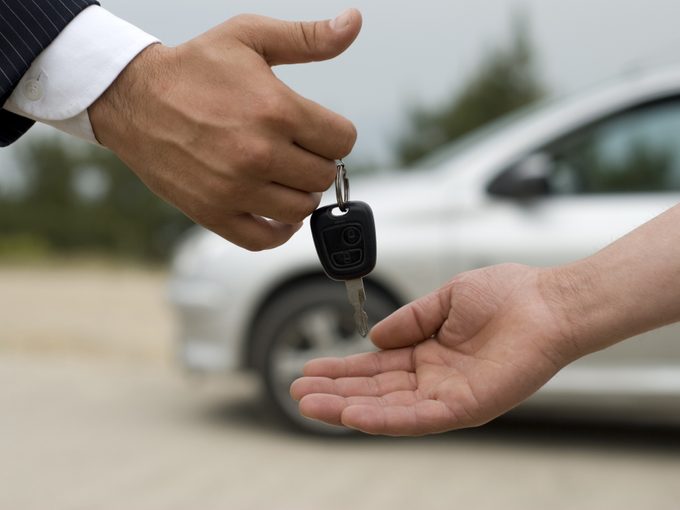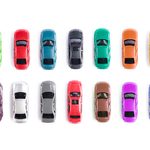How to Get the Best Used-Car Deal
If you’ve never considered buying a used car, it’s the perfect time to start thinking about it. Here’s why.

4 Reasons to Buy a Used Car
1. Choice.
People once said that buying a used car was buying someone else’s problem, but the huge popularity of leasing has meant that tens of thousands of high-quality used vehicles are coming off lease and being put up for sale every year.
In many cases, these vehicles have had only one driver. Most have been well maintained, since the cars have been under manufacturer’s warranty for their entire lives.
Still suspicious? Then do your homework. Since many leased vehicles are maintained and repaired at the dealership that leased them, you can often see all of the vehicle’s service records before buying. It’s even possible to transfer the balance of the manufacturer’s warranty to you, the buyer.
2. Savings.
You lose a substantial part of your investment in a new car the moment you drive it off the lot. On average, domestic models lose about 50 percent of their resale value during the first three years of their life, while imports lose nearly 50 percent over the first four years.
This rapid loss has everything to do with fashion and little to do with the vehicle’s true worth. Thanks to improved engineering and tighter quality control, cars last longer than ever and their average life span is now more than ten years. So buying a three- or-four-year-old vehicle means you are getting 70 percent or more of its useful life for around 50 percent of its original cost.
3. Fewer Hidden Costs.
New cars may appear reasonably priced if you look at the bare-bones sticker price, but tack on freight charges, predelivery inspection and sales taxes, and you’ll feel as if you’ve been sideswiped by a tank. “That new model advertised at $19,000 is really going to cost $24,000 to drive it off the lot,” says Michael Turk, consumer advocate and lawyer for the Automobile Protection Association (APA). “That’s what makes used cars such a great value.” There are no nasty surprises when it comes time to pay the bill.
4. Lower Insurance Rates. A used car can also save you hundreds of dollars in insurance costs. In downtown Toronto, for example, a 40-year-old man will pay $162 a month to insure a 2002 two-door Pontiac Sunfire GT. He will pay only $133 a month to insure the 1997 model of the same car. That’s a yearly savings of $355.
All told, the savings from driving used cars rather than new ones can easily surpass $1,000 a year.
| Related Links
The following links are for informational and educational use only. Reader’s Digest does not endorse or guarantee any information contained therein.
|
How do you find a used car at a fair price? Follow these six steps:
1. Reconnaissance.
The best new cars turn into the best used cars. So do a bit of reading and find out which vehicles have built a reputation for reliability. Consumer Reports produces an annual list of the best and worst used cars. Books such as Lemon-Aid offer a Canadian perspective on the cars you should pursue-or avoid. Before you set foot on a car lot, compile a short list of the models you will consider.
2. Smart Once-Overs.
Inspect prospects during the day so you can easily spot bumps or depressions in a car’s exterior. Check for signs of damage. Any car you’re considering should sit squarely, not tilt to one side or slope towards the front or back.
Stand a few metres in front of the vehicle. Look at the major lines of the chassis, for instance, where the sides of the hood meet the body. Make sure those lines are straight. Inspect the vehicle from different angles, searching for irregularities. Run your hands over the body.
Cars that have been been in an accident are often repainted to conceal repairs. Check seams, such as where doors meet inside door rims, for “bleed through,” indicating a different original colour. Look under the trunk’s carpet. If a car has been repainted, you’ll often see the original colour in this out-of-the-way spot.
If a late-model car has been partially or totally repainted, ask why. A fender bender in the grocery-store parking lot is probably nothing to worry about. A major collision is.
Scratches, nicks and small rust spots are normal, especially in communities that salt the roads in winter. But large patches of rust are a sign of worse things to come. Check the wheel wells over the tires. That’s one of the first areas to corrode.
Have someone switch on the lights and turn signals to make sure they work. Run the engine and check the colour of the exhaust. It should be clear or light grey. Black, white or blue smoke could indicate serious problems.
3. Check the Interior.
The APA’s Michael Turk says people either maintain their cars or they don’t. “If the interior is immaculate, then the mechanical condition will probably be the same,” he says. If the used vehicle you are looking at has a dirty, unkempt interior, it’s not likely that the oil has been changed every 5,000 kilometres.
Take a close look at the gas and brake pedals. Their condition should agree with the odometer reading. If the mileage is low but the pedals are very worn, the odometer may have been rolled back.
Push every knob and button you can find, especially the power items such as windows and sunroofs. Move and tilt the seats. Try out the radio and CD player. Test all seat belts. Don’t forget to check the air-conditioning and the heater.
4. Test-Drive It.
A quick run around the block won’t do. Arrange to take the vehicle for at least half an hour, both on the street and the highway.
Turn off the radio so you can hear how the car is performing. Is the ride smooth? The steering comfortable? If you keep your hands just barely on the wheel, does the vehicle follow a straight line or drift to one side? Are the blind spots manageable when changing lanes? How noisy is it at high speeds?
5. Get an Expert Opinion.
If a car looks good during your initial inspection and test-drive, it’s time to get serious. Take it to an independent mechanic and have him check it out. “This is a golden rule,” stresses Jim Garland, a former car salesman who now runs an independent auto consulting firm in Barrie, Ont.
Tell the mechanic you’re considering buying the vehicle and ask for a thorough inspection. Be prepared to pay $100 to $125, and expect the inspection to take an hour. “If the guy spends 15 minutes at it, he hasn’t done the job right,” says Turk.
Don’t assume a vehicle is fine simply because it’s been certified according to the regulations in some provinces. “As far as I know, there are no provincial certifications that cover a vehicle’s power train,” says Garland. “The transmission and engine could be ready to jump into the ditch and the car could still receive a pass on a safety inspection.”
6. Look Up the Car’s Biography.
Every car on the road comes with its own identifier. The vehicle identification number (VIN) is on the top of the dashboard on the driver’s side, where the windshield meets the hood. Copy this number down and make sure it matches the number on the vehicle’s papers.
Don’t buy the car until you’ve checked to see whether your province offers a used-vehicle information package, which outlines the vehicle’s history in its home province. To get the package, you will probably have to contact your local provincial provider, give them the VIN and pay about $20. If you have doubts about a vehicle being sold at a dealership, call up the car’s previous owner and ask him or her about it.
Be wary of cars that have crossed provincial borders. Computers in different provinces may not communicate with one another, and that means that there are likely to be gaps in the vehicle’s history.
Insist on a written guarantee that the sale isn’t final until you’ve had a chance to inspect a used-vehicle information package if it’s available.
For an even more detailed history of a car, you can run the VIN through Carfax, a private United States-based company whose massive database can spot other transgressions such as odometer fraud, salvage records, flood and accident damage. The report can be obtained on the Internet at www.carfax.com, or ordered by phone at 1-888-422-7329. The cost is $24.
If a car has passed all the tests above, it’s time to talk price. Remember, though, that the price of a used car should reflect its individual merits. That’s the wonderful thing about used vehicles-each one is individual, with its own history and its own set of specifics. That gives the well-prepared buyer a lot of room to bargain.
Follow the steps above and you can drive away in a great set of used wheels, flush with the knowledge that you’ve not only saved money, but also guaranteed yourself a smooth road ahead.



